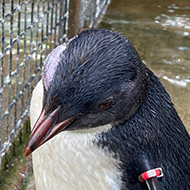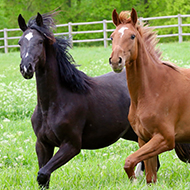Roads and fences are disrupting historic migration routes.
Developing infrastructure across the continent of Africa could be affecting the genetic diversity of wildebeest, a study has found.
Researchers from the University of Copenhagen have suggested that the development of roads, fencing and farmland could be disrupting the historic migration routes of savanna animals, including wildebeest.
150 years ago, there were many wildebeest populations that were making great migrations across Africa. Since then, despite the total number of wildebeest remaining stable, local populations have seen significant declines.
Just 40 years ago, this reduced to just two large wildebeest migrations: the Great Migration of the Serengeti-Mara and a migration in the Kalahari Desert.
However populations of wildebeest in the Kalahari Desert, which sits largely in Botswana, have declined since the construction of fencing to protect cattle from migratory animals. Numbers of wildebeest in the Botswana’s Kalahari Desert dropped from roughly 260,000 in the 1970s to fewer than 15,000 in the late 1980s.
This has left the wildebeest in the Serengeti and Masai Mara as the only remaining large population of the species.
The annual migration of 1.3 million wildebeest through the Serengeti and Masai Mara has made the Serengeti a World Heritage Site, attracting thousands of tourists. Researchers say that plans for roads and rail corridors in the Serengeti-Mara could threaten this migration.
Although they can survive in non-migratory populations, wildebeest need to migrate to support their large numbers. Researchers believe that it is because of reduced migration that populations in Kenya and Tanzania have decreased.
The researchers are calling for key decision-makers to work on preserving old and natural migratory routes, not only used by wildebeest, but also other savanna animals.
They say that wildebeest migrations make them a vital part of many ecosystems, with their grazing keeping vegetation healthy and distributing nutrients. The wildebeest also serve as prey to predators, and carrion for scavengers.
Joseph O. Oguto, co-author and a senior statistician at the University of Hohenheim, said: “Therefore, it isn't just the iconic animal that we threaten when we prevent them from migrating - but many other species as well.
“And to that, we might add the enormous amount of tourism revenue that benefits governments and local communities."
The full study can be found in the journal Nature Communications.
Image © Shutterstock






 The Federation of Independent Veterinary Practices (FIVP) has announced a third season of its podcast, Practice Matters.
The Federation of Independent Veterinary Practices (FIVP) has announced a third season of its podcast, Practice Matters.
